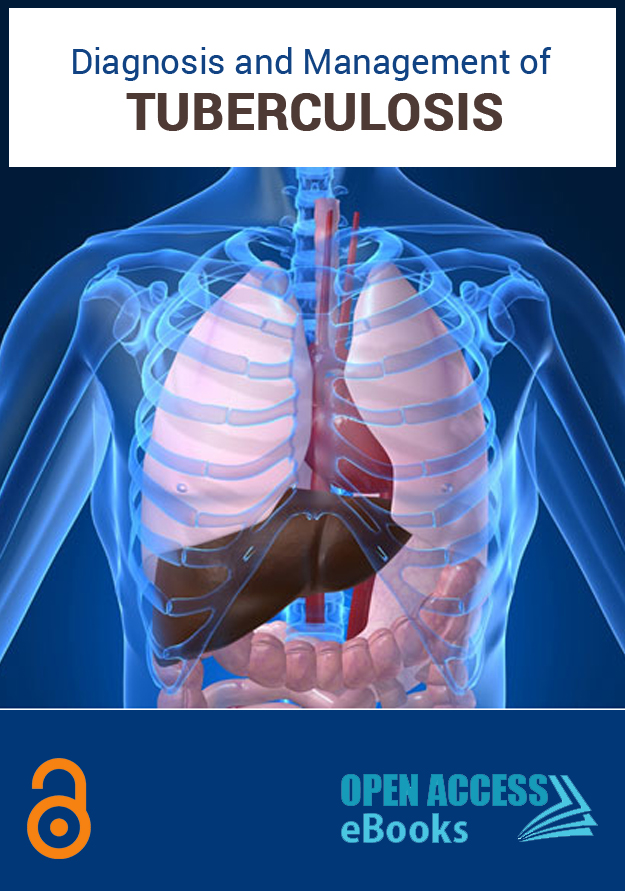Published Chapters:
Susceptibility status of Ornithodoros moubata to different classes of insecticides (Acaricides) in six regions of mainland Tanzania
eBook: Vector-Borne Diseases & Treatment
Understanding the insecticides susceptibility status of the commonly used insecticides for control of disease vectors is of paramount importance in setting up control agenda. In this chapter, the biological efficacy ofcommonly used insecticides (Acaricides) was evaluated under laboratory conditions against field collected populations of soft ticks (Ornithdoros moubata) from six regions of mainland Tanzania. The aim of this study was to assess the susceptibility status of O. moubata and ensure safe use of these pesticides for effective control. Six regions (namely Iringa, Morogoro, Arusha, Manyara, Shinyanga and Dodoma) with high infestations of O. moubata were selected. Within each region collections were carried out in two districts which are highly infested with O. moubata. Ticks collected from the community houses were transported to laboratory for rearing and insecticides susceptibility bioassays. Effectiveness of these insecticides were determined by exposing batches of unfed 1st instar nymphs of O. moubata in five replicates on filter papers impregnated with serial dilutions of technical grade insecticides. The susceptibility status of eight field isolates of O. moubata was determined. The 24 and 48 hours mortality was higher and the insecticides were found to be effective.
Applications of Probiotic Bacteria and Dairy Foods in Health
eBook: Current Research in Microbiology
The intestinal microbiota composition has a great impact on physiology and health, since commensal bacteria are crucial to maintain homeostasis and immune regulation of the gut. Consequently, disturbances of this microbiota, a process known as dysbiosis, have severe implications for the host health such as the rise of many gastrointestinal (GI) problems; including inflammatory disorders like the Inflammatory Bowel Diseases (IBD), mucositis, as well as colorectal cancer (CRC). The consumption of probiotics with beneficial effects is a promising tool to help treating such disorders. Indeed, they modulate diverse biological mechanisms involved in GI homeostasis and have been commonly used to reduce such disorders. In this chapter, we present the molecular mechanisms triggered by probiotic bacteria to modulate the gut physiology during gastrointestinal disorder and the importance of the gastrointestinal stresses tolerance as a limiting factors for probiotic application. Moreover, we focus on the emergence of functional probiotic foods, which can act as excellent vehicles, by enhancing stress tolerance and providing a protective matrix towards digestive stresses.
Amylase: A Magnificent Enzyme Toole
eBook: Current Research in Microbiology
Since past couple of decades, enzymes have been consistently used as an efficient industrial tool to synthesize a variety of products. Industries are highly dependent upon some basic enzymes viz Amylase, Carboxymethyl cellulase and proteases.Such pioneering enzymes find their applications in a wide range of industries, including pharmaceuticals, food and beverages industry and textile industry. Amylase were initially reported from the buds of tuber by Bailey [1].
Cognitive Impairment in Chronic Obstructive Pulmonary Disease: A Multifactorial Problem Screaming for Attention
eBook: Chronic Obstructive Pulmonary Disease
Cognitive impairment in patients with Chronic Obstructive Pulmonary Disease (COPD) is a prevalent symptom with detrimental consequences on many aspects of patients` functioning and health status, as well as it may affectSantalum albumthe course of respiratory treatment. COPD pathology seems to be accountable for the high prevalence of cognitive impairment in those patients. It includes several determinants of cognitive impairment which present a potential independent and overlapping impact on cognitive function in COPD. Hypoxia and systemic effects of COPD are common risk factors for the development of cognitive deficits. Early detection of cognitive impairment in COPD patients is crucial in order to prevent, delay or even treat the progress of cognitive decline. Pulmonary rehabilitation as comprehensive therapeutic intervention can provide opportunities to attenuate cognitive decline in COPD.
Causes and Treatment of Vitamin D Deficiency
eBook: Vitamin D Deficiency: Causes & Treatment
Vitamin D deficiency is a worldwide public health problem across all age groups including infants, children, adults, and elderly. Very few foods naturally contain or are fortified with vitamin D. The major source of vitamin Dis from sunlight exposure. Vitamin D, the sunshine vitamin is synthesized from 7-dehydocholesterol present in the skin of humans by the action of ultraviolet B radiation (290 – 315 nm). The major cause of vitamin D deficiency is lack of adequate sunlight exposure. In utero and during childhood, vitamin D deficiency can cause growth retardation and skeletal deformities and may increase the risk of hip fracture later in life. Vitamin D deficiency in adults can precipitate or exacerbate osteopenia and osteoporosis, cause pain producing osteomalacia and muscle weakness, and increase the risk of fall and fracture. Vitamin D deficiency is associated with increased risk of common cancers, autoimmune diseases, infectious diseases, and cardiovascular mortality. Serum 25-hydroxy vitamin D (25-OHD) is the reliable marker of vitamin D status and a level below 20 ng/ml defines deficiency. However, an optimal level above 30 ng/ml is required to maximize the bone health and non-skeletal benefits of vitamin D. A sensible sun exposure for 5 – 15 min between 1000 and 1500 hours in the spring, summer and autumn and supplementation of atleast 400 IU, 600 IU and 800 IU of vitamin D/day among infants and children, adults and elderly respectively shall guarantee vitamin D sufficiency in at risk population.
Malaria Eradication: A War How To Win?
eBook: Vector-Borne Diseases & Treatment
Since Nobel research of late 19th century by Laveran and Ross, now ample of data is available about malaria but no sign of its eradication. Today science is accelerating with an unforeseen pace resulting into a burst (an explosion) of data and analyses, still fall short to resolve the problem.What's the reason behind it? In our view the major issue behind failure is defining the problem. Here we discussed the various aspects of malaria required for malaria eradication.
Advances in Biotechnology in the Post Genomics era
eBook: Advances in Biotechnology
Pregenomic era comprised of efforts to sequence genome and now in the post genomic era where we have greater than 1000 genomes available, science is heading toward extracting valuable information from them. Sequencing has helped in revealing the hidden meaning of nucleotide and protein sequencing. Shifting from the trends of the pregenomic era to post genomic era resulted in enormous data.In this chapter, we have explored the impact of advancements in genomics on organisms ranging from viruses to plants with focus on their applications in Biotechnology. In particular, we have discussed the influence of rapidly available sequencing data in exploiting the viruses for our benefit, especially in vaccine development. In this regard, some Bioinformatics-based tools and software have been discussed. The Human Genome Project and its importance as an example and a motivation for other similar organism-specific large-scale sequencing projects has been highlighted. Finally, some aspects related to genomics-based Biotechnological aspects of plant sciences had been explored. We conclude that recent progress in genomics has brought about major breakthroughs in terms of applications of Biotechnology in different sectors such as vaccinology, proteomics, personalized medicine, as seen in Figure 1.
Ultrasonic Assisted Heat Transfer and its Application in Chemical Engineering
eBook: Advances in Chemical Engineering
Sonochemistry is considered to be a general technique like thermo chemistry (heat) and piezochemistry (pressure). The sound frequency which is higher than 16 kHz is called as ultrasound. Some animals utilize ultrasound for navigation (dolphins) or hunting (bats) using the information carried by back-scattering sound waves. Ultrasound is one of the emerging technologies that were developed to minimize processing, maximize quality and ensure the safety of food products. The ultrasound and cavitational effects were found 100 years before. The cavitation was first reported by Thornycroft and Barnaby in 1895 [1]. They noticed that the propeller of the submarine was pitted and eroded. They observed the consequence of collapsing bubbles due to hydrodynamic cavitation that generated intense pressure and temperature gradients in the local vicinity. In 1917, Lord Rayleigh [2] published the first mathematical model describing a cavitation event in an incompressible fluid. After 1927, when Richards and Loomis [3] reported the first chemical and biological effects of ultrasound, the workers recognised that cavitation could be an useful tool in chemical reaction processes.
Iron Deficiency Anaemia: the Link Between Oxidative Stress and Bone Turnover
eBook: Nutritional Deficiency & Impact on Health
Iron-deficiency anaemia (IDA), one of the most common and widespread health disorders worldwide, affects fundamental metabolic functions and has been associated with deleterious effects on bone. On the other hand, oxidative stress results from an imbalance between the formation and neutralization of reactive oxygen species (ROS) and it is imposed on cells as a result of one or more of the following factors: an increase in oxidant generation, a decrease in antioxidant protection, or a failure to repair oxidative damage. During IDA oxidants are increased and antioxidants decreased, so the oxidative/antioxidative balance is shifted toward the oxidative side. Fe status is directly correlated with mineral bone density and Fe deficiency diminishes the mineral bone content, the bone mass and mechanical resistance. Fe deficiency diminishes bone matrix formation, reducing the amount of procollagen type I N-terminal propeptide released to the serum under these conditions. Bone resorption process increases in Fe deficiency because osteoblast function and bone formation are strongly oxygen-dependent. Hypoxic condition (a consequence from decreased oxygen delivery in Fe deficiency anaemia) diminishes bone formation. The inhibitory effects of hypoxia are due to decreased osteoblast proliferation and differentiation and evoked oxidative stress.


